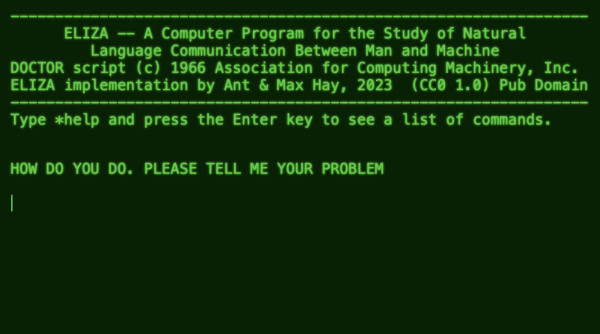ELIZA recreated for new Coursera course
In 1966, Joseph Weizenbaum unveiled ELIZA, a groundbreaking experiment in natural language processing at MIT. Using simple pattern matching and substitution rules, ELIZA simulated conversation so convincingly that some users believed the program genuinely understood them. Its most famous persona—the “DOCTOR” script—parodied a Rogerian psychotherapist, reflecting back questions and comments with uncanny resonance.
Weizenbaum was deeply critical of people’s acceptance of ELIZA and intended it as a critique of artificial intelligence in therapeutic and human contexts. He was disturbed by how quickly users anthropomorphized the chatbot and developed emotional attachments, seeing this as evidence of a dangerous tendency to overestimate computers and mistake superficial interaction for genuine understanding.
What made ELIZA revolutionary wasn’t its complexity, but its revelation: that humans readily project understanding and empathy onto machines. Weizenbaum’s creation is now widely recognized as one of the origin points of AI, language models, and our cultural dialogue with machines.
⸻
The Hay Recreation
This Javascript version is not a copy of the original source code. The original ELIZA was written in MAD-SLIP, a language far removed from today’s environments. Instead, Ant and Max Hay built this independent implementation in modern JavaScript, relying solely on Weizenbaum’s published descriptions and technical notes.
Their recreation is:
- Historically faithful: Mimicking the structure, conversational flow, and methodology of Weizenbaum’s 1966 paper.
- Open and accessible: Released to the public domain under CC0 1.0, ensuring anyone can study, use, or adapt it.
- Technically curious: Extended to run on vintage interfaces such as the ASR 33 teletype, complete with added serial I/O support.
This careful attention to fidelity makes it more than a nostalgic remake—it’s an active reconstruction of an early moment in human–machine communication.
⸻
Why It Matters Today
In the era of large language models and generative AI, returning to ELIZA is like looking at the seed from which an entire forest grew. By encountering this recreation, we’re reminded that AI’s origins were not about intelligence but about interaction.
For students in my upcoming Coursera course on Creative AI, ELIZA serves as both history lesson and hands-on lab: a chance to experience the roots of conversational computing, and to reflect critically on how far (and how little) we’ve traveled since.
